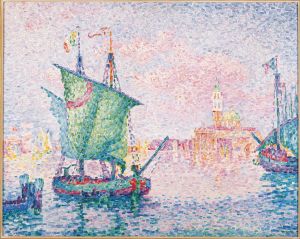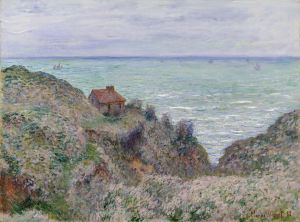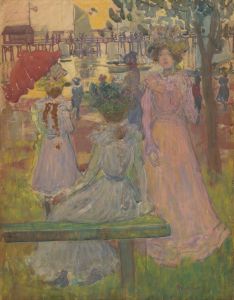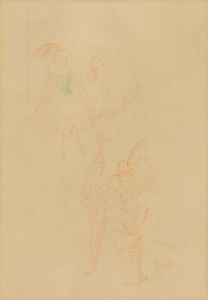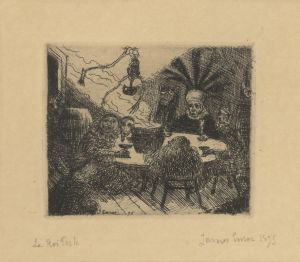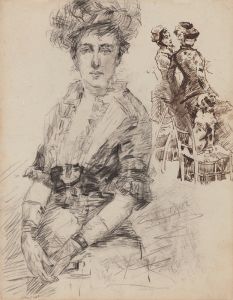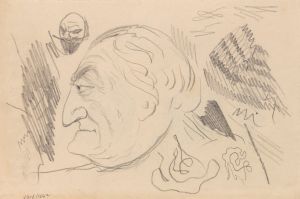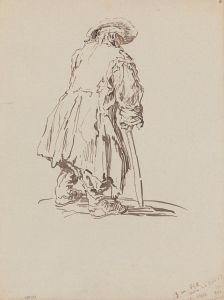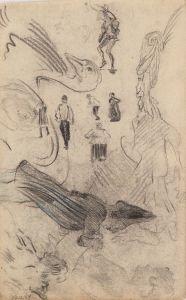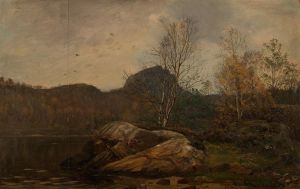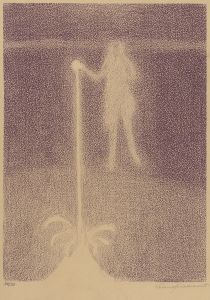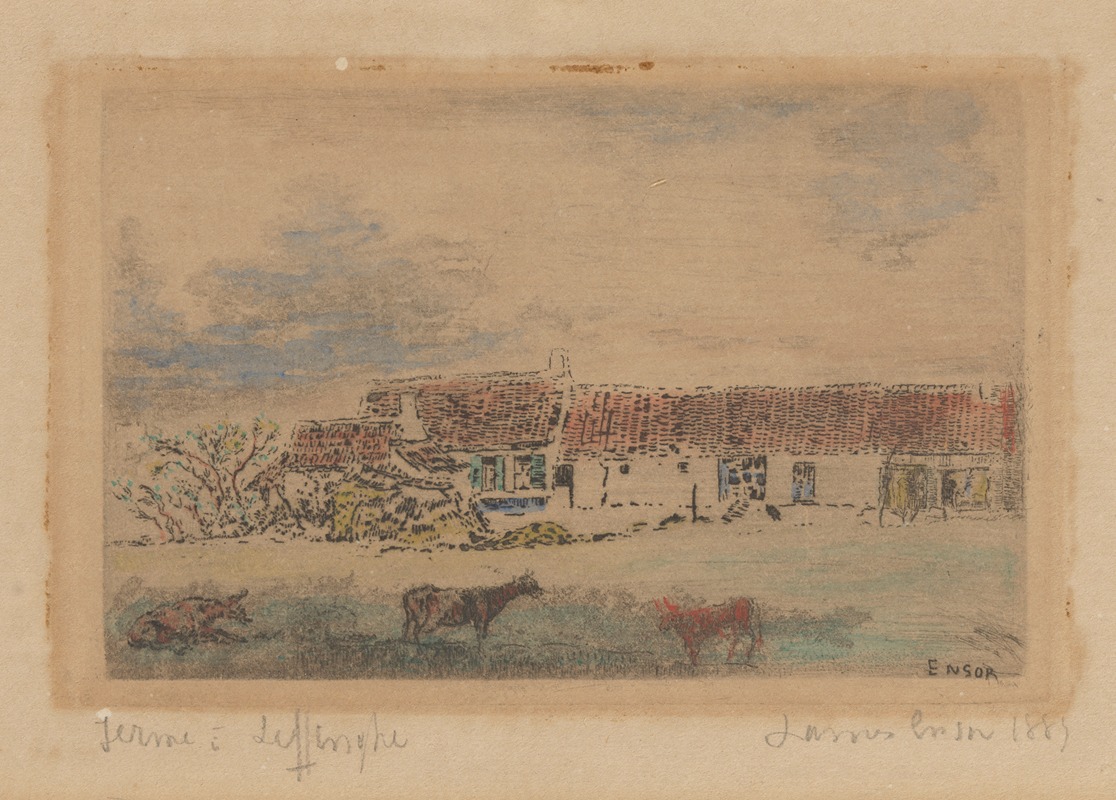
Hoeve te Leffinge
A hand-painted replica of James Ensor’s masterpiece Hoeve te Leffinge, meticulously crafted by professional artists to capture the true essence of the original. Each piece is created with museum-quality canvas and rare mineral pigments, carefully painted by experienced artists with delicate brushstrokes and rich, layered colors to perfectly recreate the texture of the original artwork. Unlike machine-printed reproductions, this hand-painted version brings the painting to life, infused with the artist’s emotions and skill in every stroke. Whether for personal collection or home decoration, it instantly elevates the artistic atmosphere of any space.
James Ensor, a prominent Belgian painter and printmaker, is known for his unique and often avant-garde style that contributed significantly to the development of Expressionism and Surrealism. One of his lesser-known works is "Hoeve te Leffinge," which translates to "Farm at Leffinge." This painting reflects Ensor's early interest in landscapes and rural scenes, a theme that he explored before fully embracing the more fantastical and satirical elements that characterized his later work.
"Hoeve te Leffinge" is believed to have been created during the late 19th century, a period when Ensor was still developing his artistic voice. During this time, he was influenced by the Impressionist movement, which is evident in his use of light and color to capture the essence of the Belgian countryside. The painting depicts a tranquil rural scene, showcasing a farmhouse surrounded by fields and trees. Ensor's brushwork in this piece is more restrained compared to his later works, focusing on the natural beauty and serenity of the landscape.
The village of Leffinge, located in the Flemish region of Belgium, provided Ensor with ample inspiration for his landscape paintings. This area, with its picturesque farms and pastoral settings, was a common subject for many artists of the time who sought to capture the simplicity and charm of rural life. Ensor's depiction of the farm at Leffinge is characterized by a subtle yet effective use of color and light, which imbues the scene with a sense of calm and timelessness.
While "Hoeve te Leffinge" may not be as widely recognized as some of Ensor's other works, such as "The Entry of Christ into Brussels in 1889" or "Skeletons Fighting Over a Pickled Herring," it provides valuable insight into the artist's early development and his ability to convey mood and atmosphere through landscape painting. This piece serves as a testament to Ensor's versatility and his keen observation of the world around him.
Ensor's early landscapes, including "Hoeve te Leffinge," are important for understanding the trajectory of his artistic career. They highlight his initial exploration of traditional subjects before he transitioned to the more provocative and imaginative themes that would define his legacy. These works also reflect the broader artistic trends of the time, as many artists were moving away from academic traditions and embracing new approaches to capturing the world.
In summary, "Hoeve te Leffinge" is a notable example of James Ensor's early landscape paintings. It captures the serene beauty of the Belgian countryside and demonstrates the artist's skillful use of color and light. Although it may not be as famous as his later, more experimental works, this painting is an essential part of Ensor's oeuvre, offering a glimpse into the formative years of an artist who would go on to become a pivotal figure in modern art.





